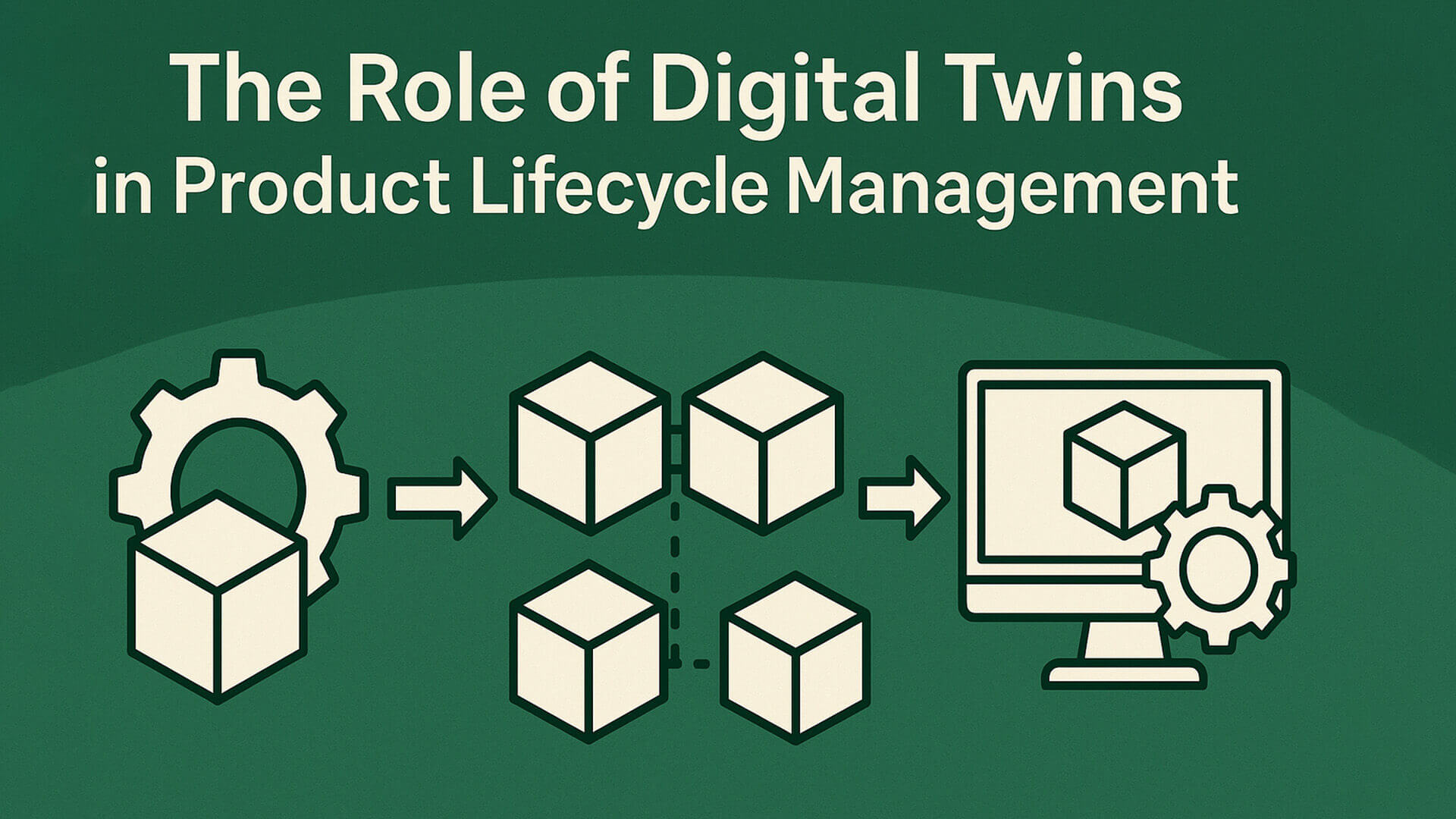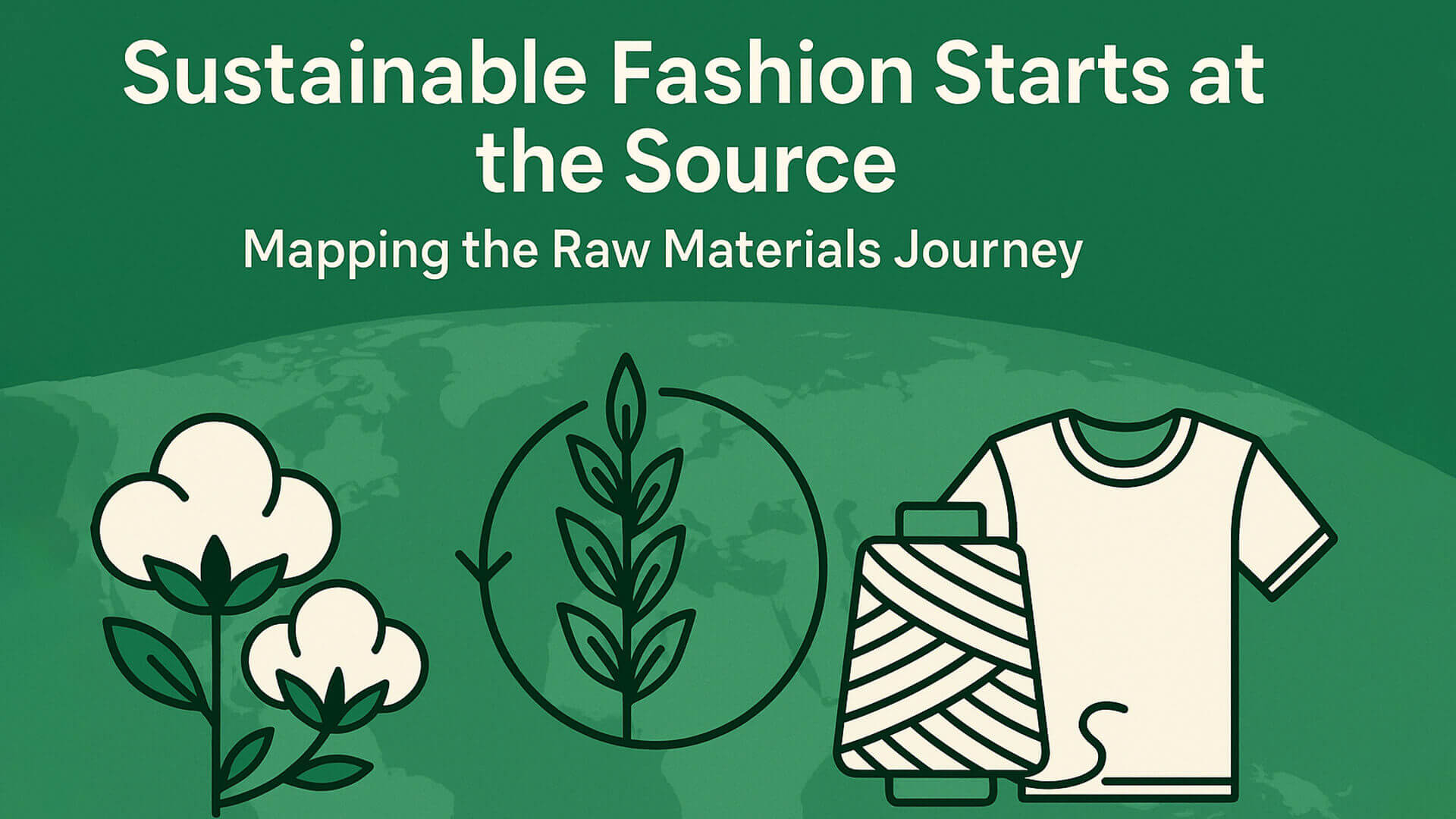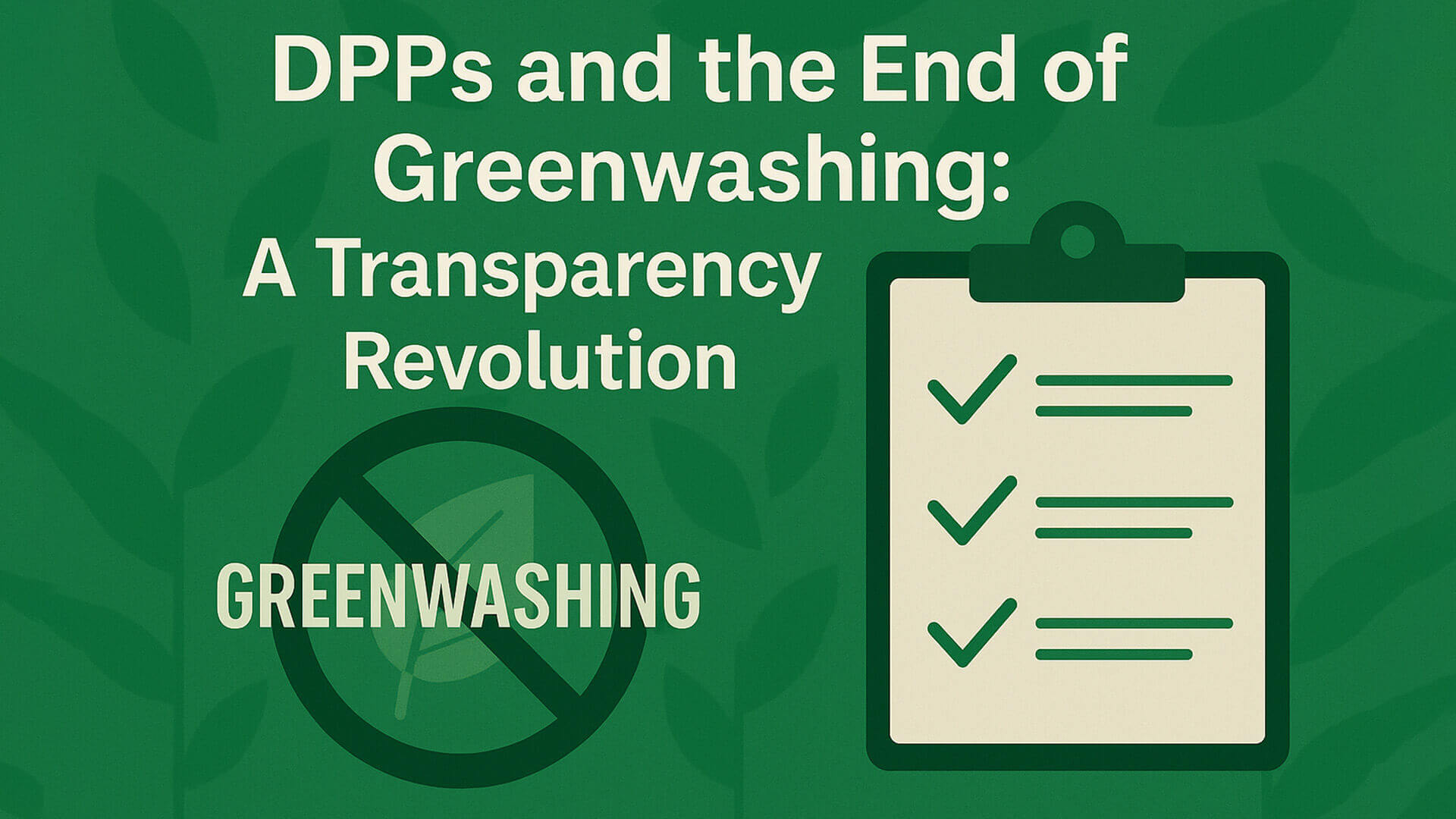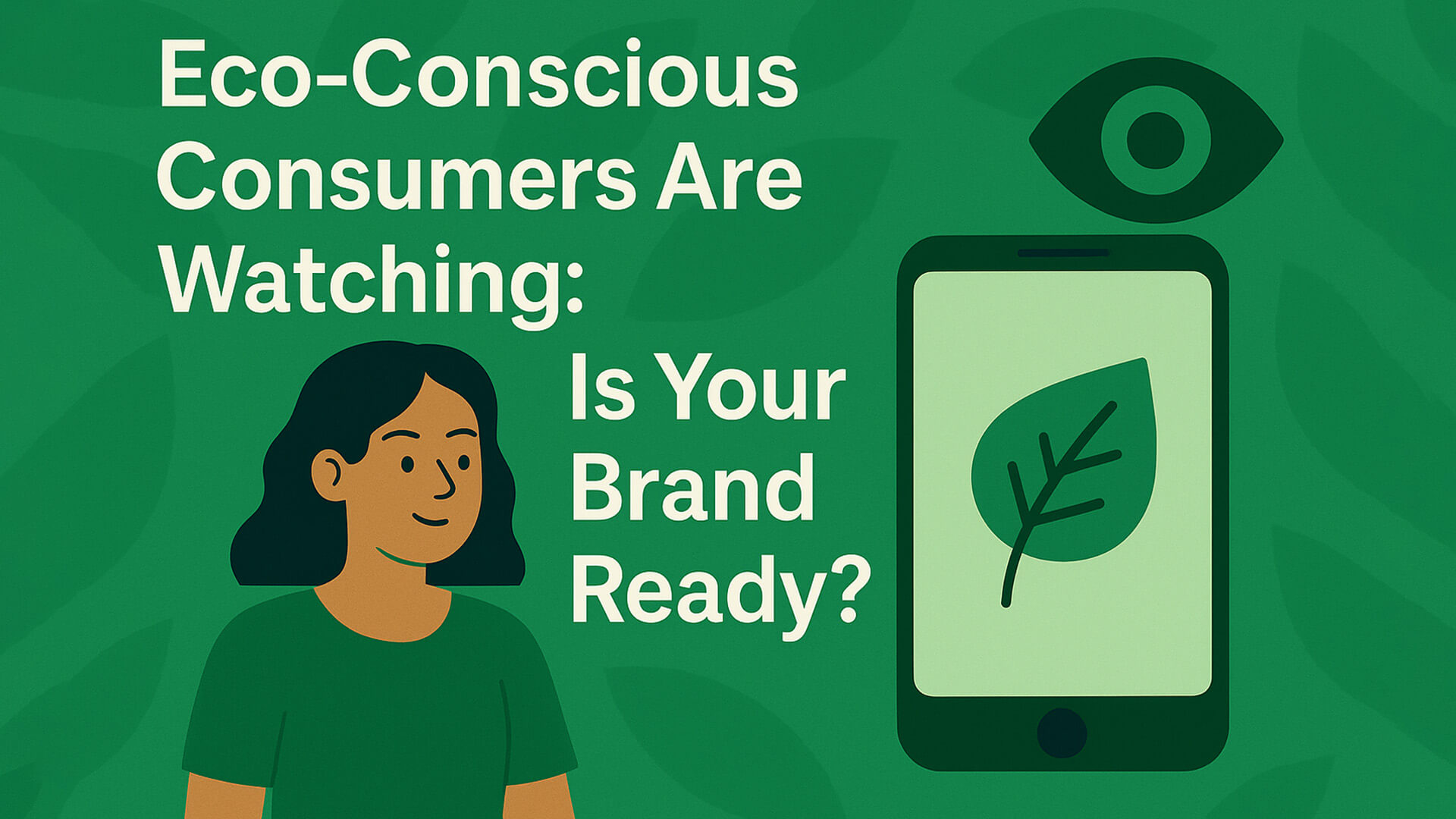- info@greenthreadsdpp.com
- Southampton, United Kingdom
What the Digital Product Passport Means for Fashion Designers and Developers?
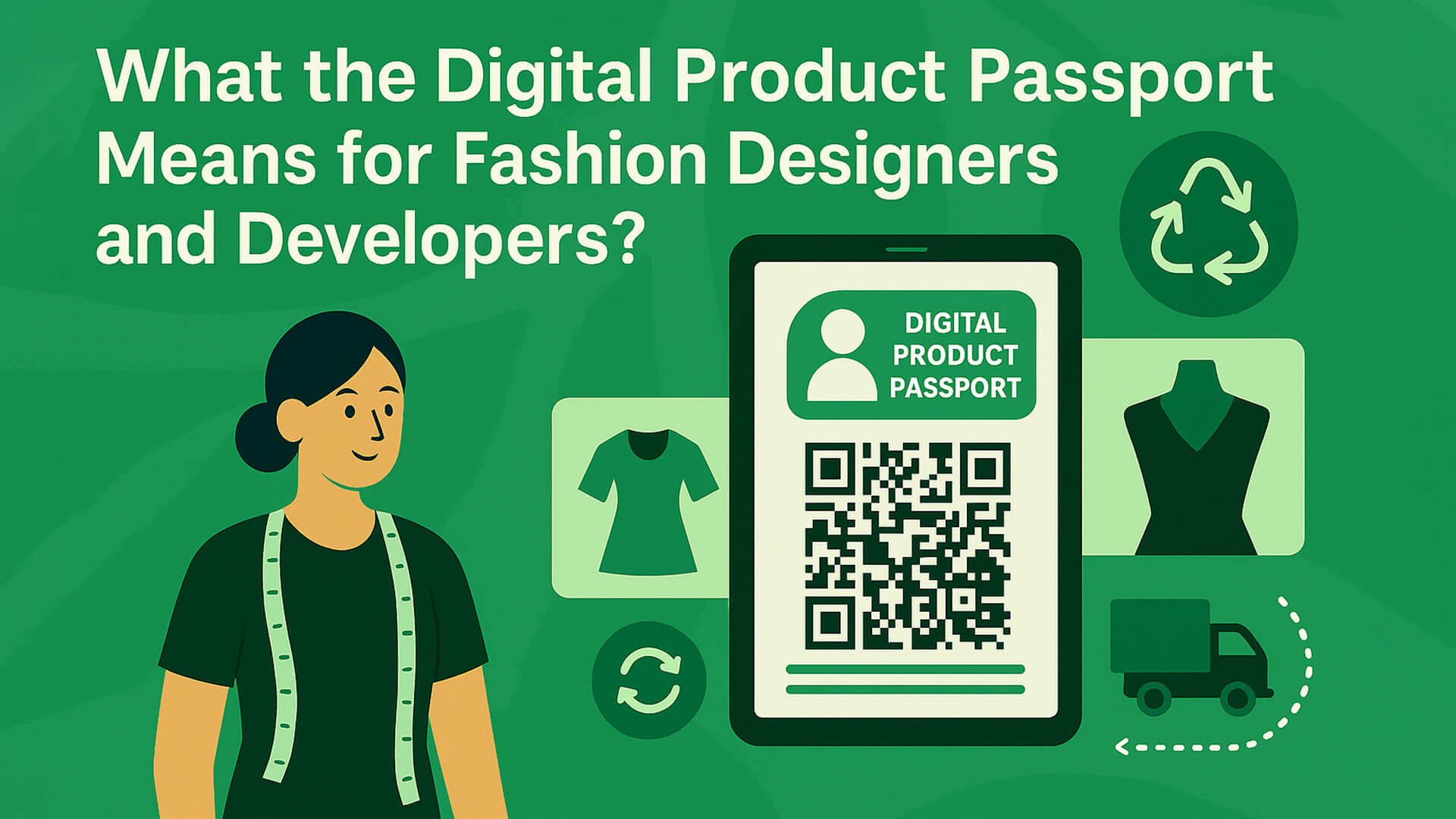
Introduction: Why Digital Product Passports Matter?
The fashion industry is at a crossroads. While it continues to inspire creativity, culture, and commerce, it also faces growing scrutiny over its environmental and social impact. From overproduction and excessive waste to complex supply chains and opaque sourcing, fashion’s traditional systems are no longer fit for purpose in a world facing a climate crisis and resource scarcity.
To address these challenges, the European Union and other global leaders are pushing for greater accountability and transparency across industries. One of the most promising tools in this movement is the Digital Product Passport (DPP), a new standard designed to collect and share detailed information about a product’s lifecycle.
For the textile and apparel sector, DPPs could be revolutionary. They’re not just about regulation; they represent an opportunity to build smarter, more circular systems. DPPs empower brands to prove their sustainability claims, help consumers make informed choices, and give recyclers the data needed to close the loop.
Most importantly, DPPs reshape how fashion is designed and developed. For designers, it means creating with longevity and traceability in mind. For developers, it means building digital bridges that connect product, platform, and purpose.
The future of sustainable fashion is digital, and it starts here.
The Fashion Footprint: Why Transparency Is Urgent?
The fashion industry has long dazzled with its speed, creativity, and global influence, but behind the curtain lies a massive environmental cost. From the very first stitch to the final disposal, each stage of a garment’s life leaves a footprint. The scale of that impact is no longer something we can ignore.
The production of textiles consumes enormous amounts of water, energy, and raw materials. Cotton farming alone is responsible for significant water use, while dyeing and finishing processes often release toxic chemicals into rivers and soil. The use of fossil fuels in production and transport contributes to over 10% of global carbon emissions, exceeding those of international aviation and shipping combined.
On top of this, the world discards 92 million tonnes of textile waste every year, much of which ends up in landfills or incinerators. Most garments are worn only a handful of times before being thrown away, and many are made from synthetic fibres that take centuries to break down.
Transparency is no longer a “nice to have” rather it is essential. To create meaningful change, we need to track the full lifecycle of every garment. That’s where Digital Product Passports (DPPs) come in by offering visibility, accountability, and a path to a truly circular fashion system.
What Is a Digital Product Passport (DPP)?
A Digital Product Passport (DPP) is a digital record that stores detailed, transparent, and traceable information about a product throughout its entire lifecycle. It contains data from raw materials to end-of-life. Think of it as a digital ID for a garment or product. It can be accessed via QR code, NFC tag, or embedded link, offering valuable insights for consumers, brands, recyclers, and regulators alike.
The goal of the DPP is to make supply chains more transparent, encourage circular practices, and help everyone involved in the fashion industry make better, more sustainable decisions. The European Union has made DPPs a key part of its upcoming regulations under the Ecodesign for Sustainable Products Regulation (ESPR), with the fashion and textile sector being one of the first industries to be included.
A typical DPP may include:
-
Material composition and sourcing: What fibres were used and where they came from.
-
Production details: Information about manufacturing locations, processes, and certifications.
-
Environmental impact: Carbon footprint, water usage, and chemical inputs.
-
Care and repair instructions: How to look after the item to extend its life.
-
Recycling or resale guidance: End-of-life options to keep garments in use longer.
-
Certifications and compliance: Any eco-labels, safety marks, or sustainability standards.
The DPP is not just a data sheet, it’s a tool for building trust, improving design, and enabling a circular economy in fashion.
How DPPs Transform Design and Development?
Digital Product Passport (DPP) is not just another box to tick; it is reshaping the entire mindset behind fashion creation. At its core, DPP introduces a new way of thinking that puts sustainability, transparency, and long-term value at the heart of design and development.
For designers, DPP offer a chance to design with purpose. It’s no longer just about fabric choice and visual appeal; it’s about creating garments that last, can be repaired or recycled, and leave behind a smaller footprint. This approach encourages better material selection, smarter construction methods, and creative solutions for circularity.
For developers, DPPs are opening up a new frontier. They bring the chance to build powerful digital systems that connect every part of a product’s journey; from raw materials to the hands of consumers and eventually to recycling or resale.
Here’s how DPPs are transforming the process:
Lifecycle Thinking at the Design Stage
Designers now consider how a garment will live, age, and be reused. This means selecting biodegradable fabrics, designing for easy repair, and thinking about how materials can be separated at end-of-life.
Data-Driven Development
Developers create platforms and tools that capture, store, and share product data. These systems link supply chain steps together, ensuring accurate, real-time traceability and compliance with new regulations.
Digital Twin Creation
Each item can be mirrored with a digital twin. A dynamic profile that tracks where the product’s been, who’s owned it, and how it can be cared for or reused. This enables smarter resale, recycling, and lifecycle tracking.
Interactive Customer Experiences
Through QR codes or NFC tags, consumers can scan a product and discover its full story. From where it was made to how it can be repaired or recycled, DPPs turn passive purchases into conscious choices.
Improved Supply Chain Collaboration
DPPs bring designers, developers, suppliers, and recyclers together. Each party contributes valuable data that feeds into a transparent, circular system, where nothing goes to waste and everything has value.
Compliance and Circular Readiness
As sustainability regulations tighten, brands that embrace DPPs early will be ahead of the curve. Beyond compliance, they’ll be ready to join emerging networks for resale, rental, and material recovery.
DPPs are helping the fashion industry shift from short-term production to long-term impact. They’re not just changing the way we make clothes; they’re changing why we make them.
Three Innovation Models for the DPP Era
As Digital Product Passports become central to the future of fashion, innovation is not just happening in the technology itself; it's transforming how we design, produce, and circulate clothing. DPPs open up new creative and business opportunities for brands that want to lead in transparency and sustainability.
Here are three key innovation models that are gaining traction:
Smart Design for Traceability
Fashion designers are embracing traceability as a design principle. This means selecting verified materials, working with transparent suppliers, and embedding traceable markers into each product. With DPPs, every step of the product journey, from farm to factory to shop floor; everything can be documented and verified. This increases consumer trust and enables brands to prove their sustainability claims.
Digital Product Twins and Lifecycle Management
Each product now has the potential to exist digitally as well as physically. These “digital twins” evolve alongside the garment, capturing everything from ownership changes to repair history. Brands can use this data to offer services like certified resell, loyalty points for garment returns, or even personalised repair recommendations.
Circular Retail Ecosystems
DPPs are fuelling new business models like product-as-a-service, resale, and rental. With item-level data stored and easily accessed, retailers can manage stock more efficiently, facilitate easier take-back schemes, and build circular platforms that keep garments in use longer. These models help reduce waste and bring added value to both brands and customers.
Collaboration Is Key to Making DPPs Work
Digital Product Passports are not a standalone solution. They require a deep level of collaboration across industries, technologies, and policy frameworks. The strength of DPPs lies in their ability to connect information from many different sources and that only works when all parts of the system are aligned.
Tech and Fashion Integration
Developers and fashion professionals must work hand in hand. Designers need intuitive platforms for uploading product data, while developers need to understand what data matters most for traceability and sustainability.
Cross-Industry Pilots and Partnerships
Leading brands, recyclers, and tech providers are running pilot projects to test DPPs in real settings. These real-world trials highlight what's possible and what needs to be improved. Examples like Nobody’s Child and the IoDF x Epam partnership show that shared knowledge leads to faster, smarter progress.
Policy and Industry Alignment
Governments are creating regulations that will soon make DPPs mandatory. But without industry input, those policies may miss what’s practical or scalable. Collaboration between brands, environmental groups, and policymakers ensures that rules support real-world innovation.
Consumer Engagement
Education is essential. Brands and NGOs must work together to help consumers understand why DPPs matter and how to use them. Engaging customers through storytelling, digital content, and incentives can drive behaviour change at scale.
In short, DPPs can only succeed if we treat them not just as a tool, but as a shared responsibility.
Green Threads DPP: Designing a Transparent Future
At Green Threads DPP, we believe that the future of fashion lies in radical transparency, smart data, and ethical collaboration. Our mission is to empower brands, designers, and manufacturers to transition toward a circular and responsible fashion ecosystem, where every product tells its full story and nothing goes to waste.
Through our work, we help businesses unlock the full potential of Digital Product Passports (DPPs) by combining sustainability insights with cutting-edge technology. Our platform and services are designed to support industry-wide transformation in alignment with upcoming EU regulations and global sustainability goals.
Here’s what we do:
Digital Product Passport Implementation
We guide fashion brands through the complete DPP process; from data mapping and collection to QR/NFC integration and backend system support by making it simple to adopt transparency at scale.
Traceability Across the Supply Chain
Our solution provides end-to-end visibility, allowing businesses to track materials, processes, and certifications in real time. This supports more ethical sourcing, stronger accountability, and better decision-making.
Circular Economy Readiness
We prepare businesses to thrive in a circular system. Our DPP tools support repair, resale, rental, recycling, and consumer engagement through verified product information and impact reporting.
Bespoke Sustainability Consultancy
Beyond tech, we offer tailored consulting services to help brands align their supply chains, product design, and messaging with circular principles and ESG standards.
Compliance and Regulation Support
With the EU’s Ecodesign for Sustainable Products Regulation (ESPR) approaching, we ensure clients are fully prepared for mandatory transparency laws, giving them a head start on compliance and innovation.
At Green Threads DPP, we are more than a technology provider; we are a partner in transformation. We believe that every garment should have a story, and that story should be accessible, honest, and empowering.
By helping brands make their impact visible, we’re not just making fashion better; we’re making it future-proof.
Conclusion: Ready for the Next Chapter?
The future of fashion will be built on transparency, traceability, and transformation and Digital Product Passports are at the heart of that change.
For designers, they offer a framework to create with intention. For developers, they unlock new digital possibilities. For brands, they provide a way to prove their values. And for consumers, they create meaningful connections between the products they wear and the people and processes behind them.
References
-
EU Parliament. (2024). Digital product passport for the textile sector.
-
Carbonfact. (2024). Policy update: DPP for fashion.
-
Vogue Business. (2024). Digital product passports: Lessons from early adopters.
-
MDPI. (2024). Circular economy and digital tools in textiles.
-
ResearchGate. (2024). Case studies on circular supply chains and DPP.

